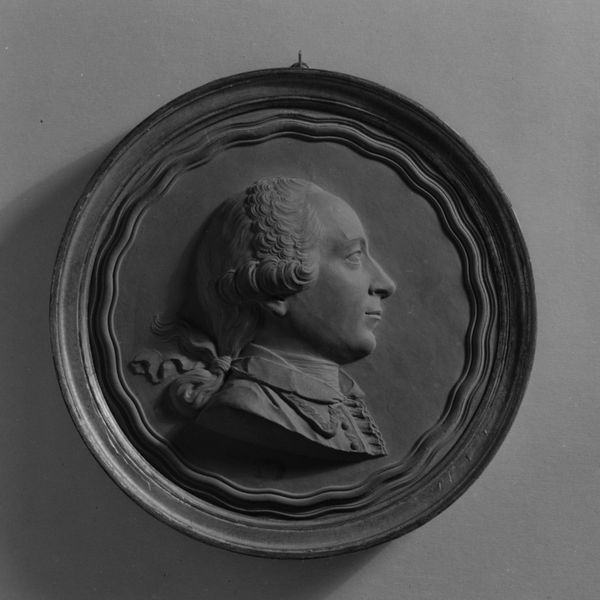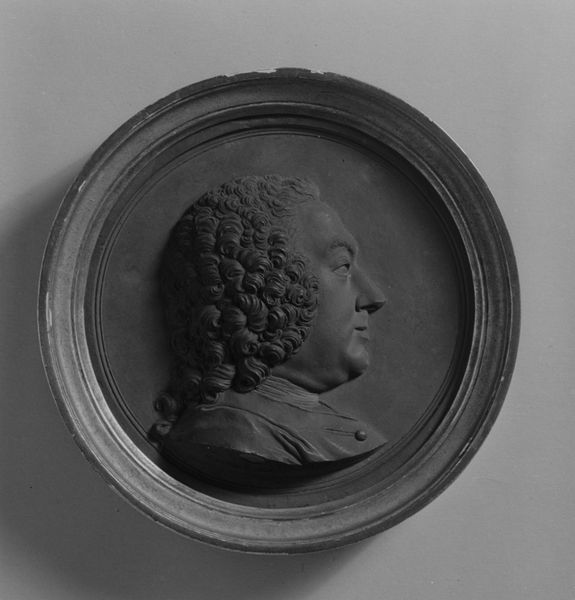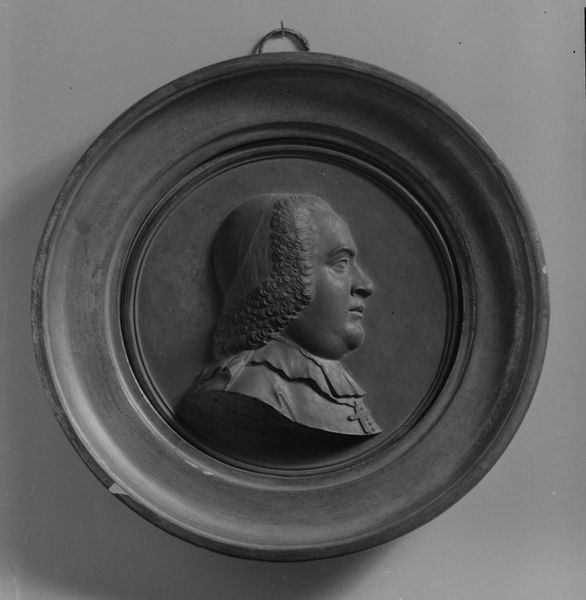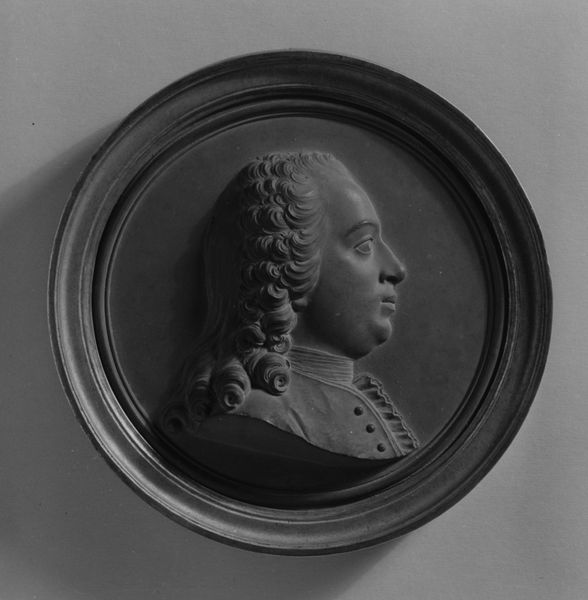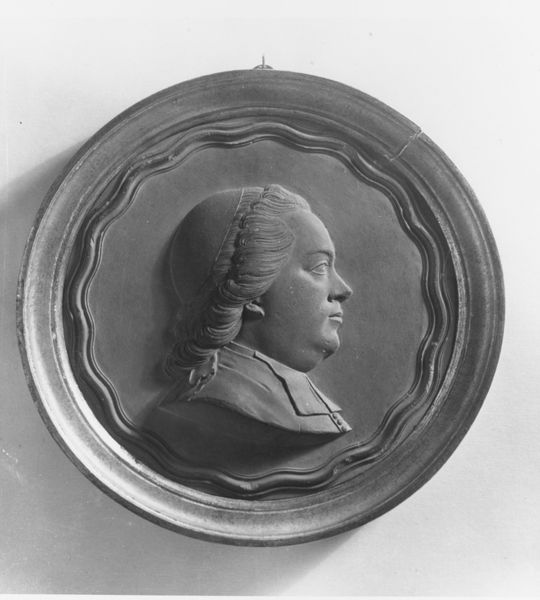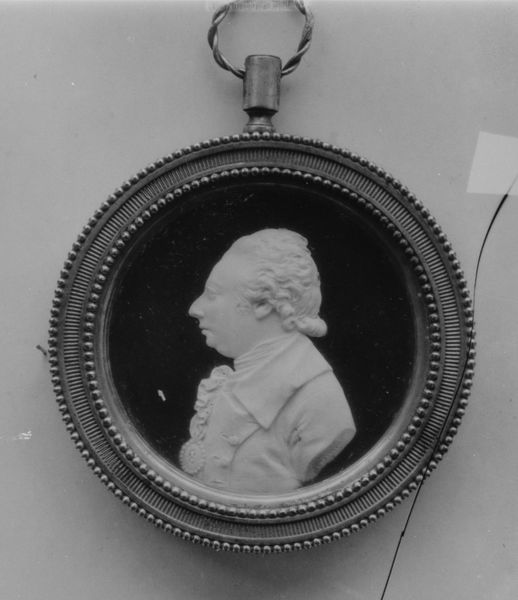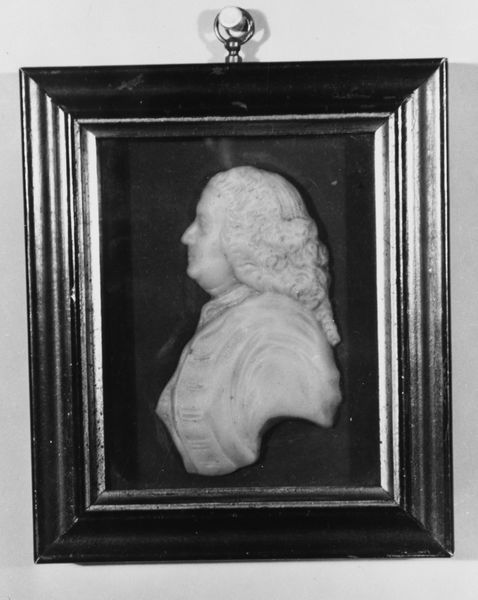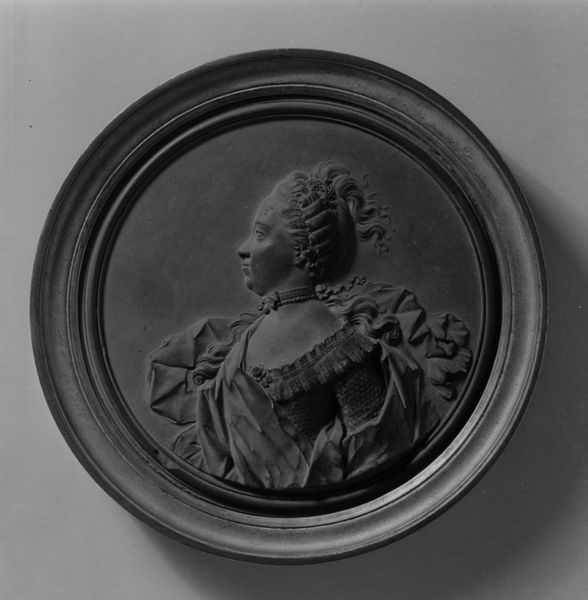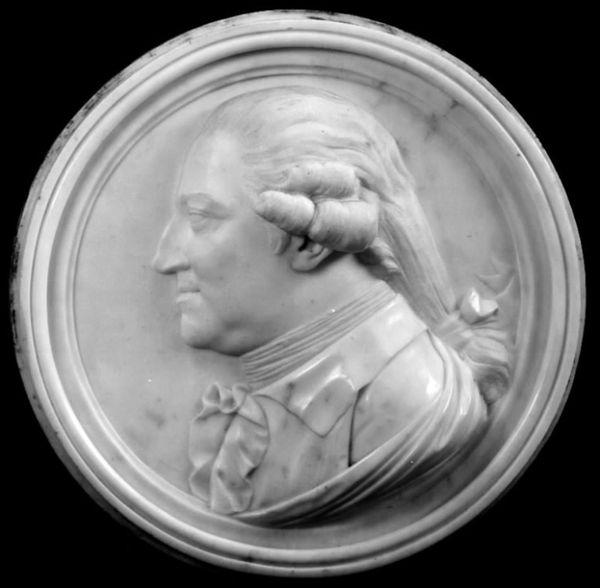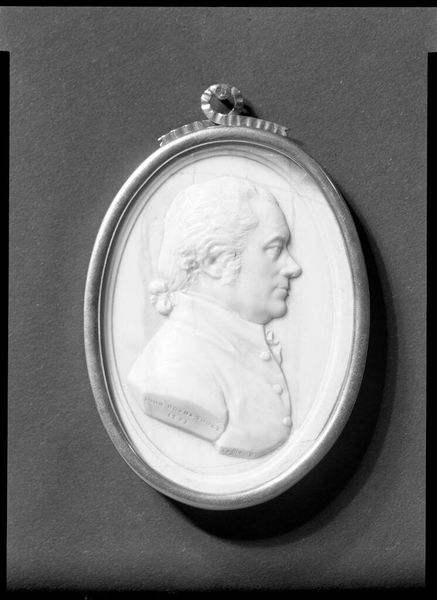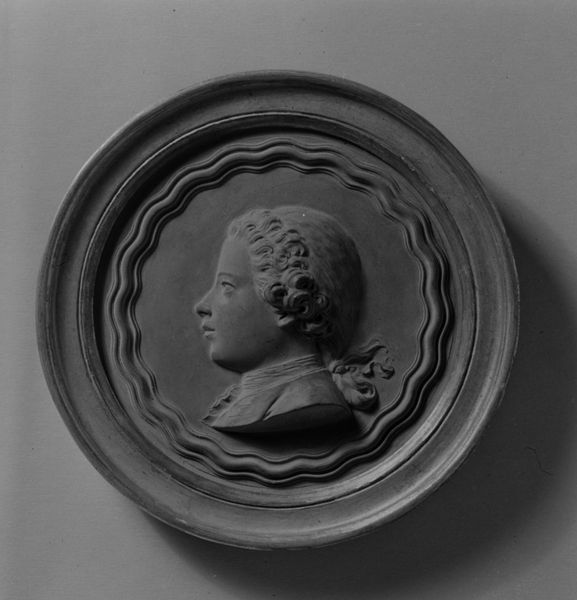
sculpture
#
portrait
#
neoclacissism
#
sculpture
#
sculpture
#
history-painting
#
decorative-art
Dimensions: Diameter: 6 1/2 in. (16.5 cm)
Copyright: Public Domain
Curator: Here we have a piece entitled "Louis XV," created in 1763 by Jean-Baptiste Nini. It now resides at the Metropolitan Museum of Art. Editor: Wow, just looking at it, I get a feeling of… well, not warmth, but something…aloof? Distant. It’s the cold perfection of the neoclassical style. Is this a bust? I guess a relief rather, isn't it? The detail in the wig, those perfectly placed curls! It is giving marble but without the inherent charm. Curator: You've captured its essence! It is indeed a terracotta relief. What's interesting to me is how it exemplifies the style of the time, which sought to revive the aesthetics of ancient Greece and Rome. This aesthetic speaks to the yearning for stability and order, especially during an era marked by revolution, social transformation, and rising bourgeoisie class. And this sculpture attempts to portray Louis as stoic and worthy of respect despite these societal conflicts, doesn’t it? Editor: The French Royalty didn't think people of those ancient lands had revolutions? The French should’ve had their ears closer to the ground if they truly sought the past as guidance... but then the wig must have covered their hearing canal! So it makes the work rather ironic, knowing what followed Louis XV reign. I wonder, does that detached, almost bored expression capture the true disposition of the man or idealize an air of disinterest? Curator: Perhaps it captures both? Royal portraiture was rarely about mirroring reality. The work had to show divine power through classical allusion, you see? Louis embodies that divine power visually by displaying no obvious human frailties or emotional excesses. Also note how Nini chooses to present the King in profile, as Roman Emperors were presented on coins? To draw a comparison of Louis as equally as strong, proud and determined? Editor: Like the image of an ego encased in decorative art. And while it's beautifully rendered, you're left wondering: Who was the human being behind all the Neoclassical pomposity? It doesn't stir a passion or a deep feeling; more an echo of what he believed to represent as a symbol, right? And for some reason I feel it could easily be used as a quirky doorknocker… maybe a bit too pretentious? Curator: A doorknocker! Well, that’s one interpretation I have yet to hear. For me, its artistic accomplishment lies in Nini's skillful condensation of power dynamics and sociopolitical ideologies. In some ways, I find it to be one of the last and great historical gasps of that time in that place. Editor: For me too. It makes you see that sometimes history, however frozen in relief, cannot stay put. And sometimes a door has to knock for progress.
Comments
No comments
Be the first to comment and join the conversation on the ultimate creative platform.
